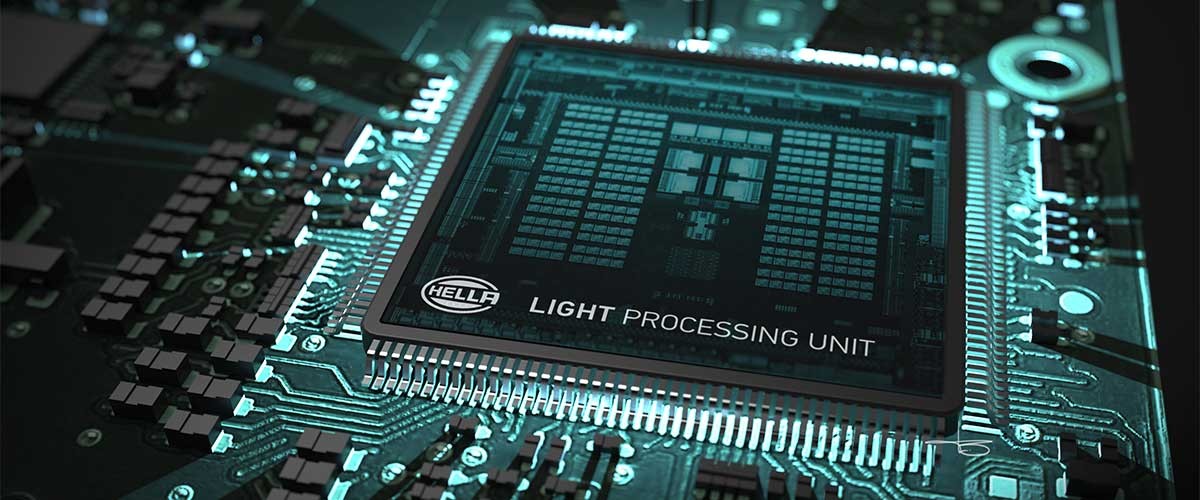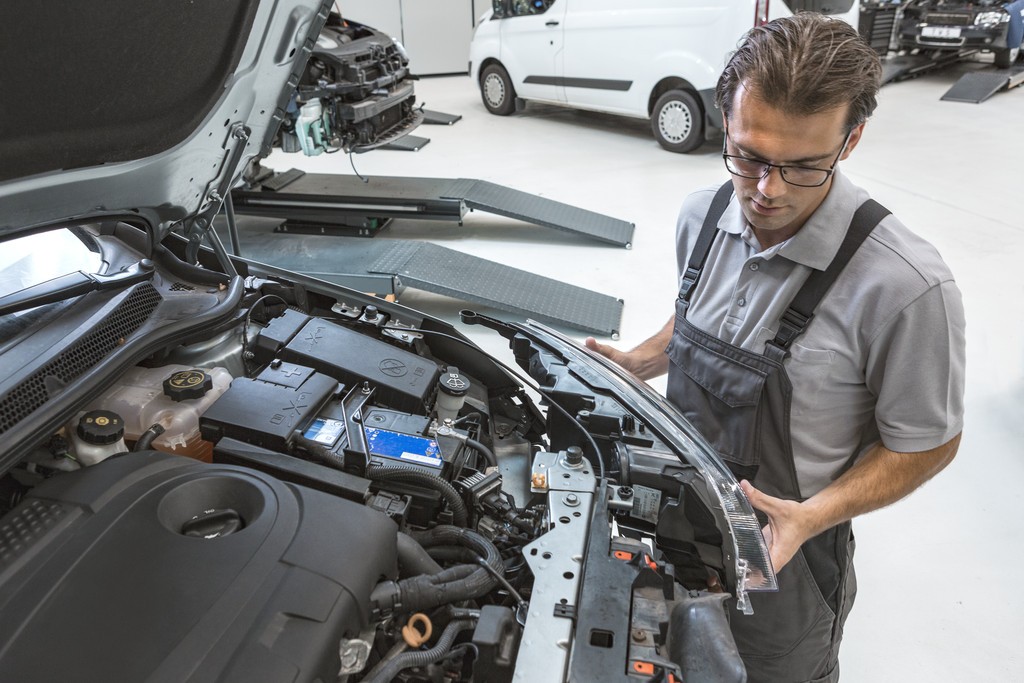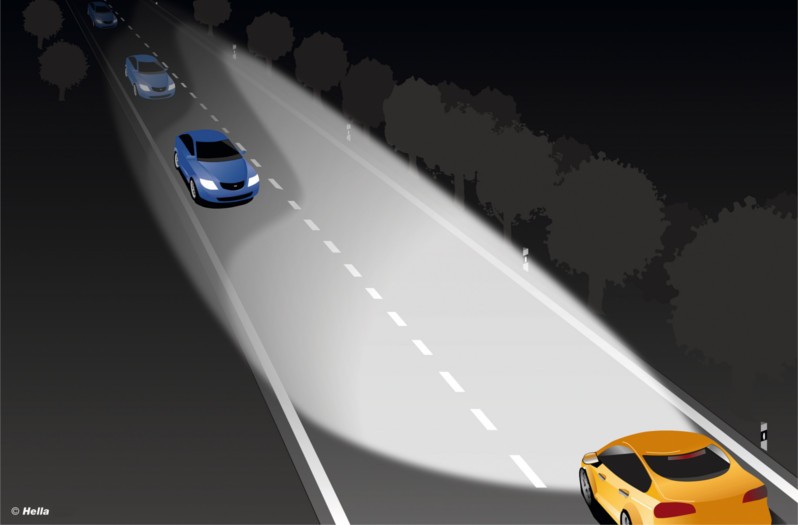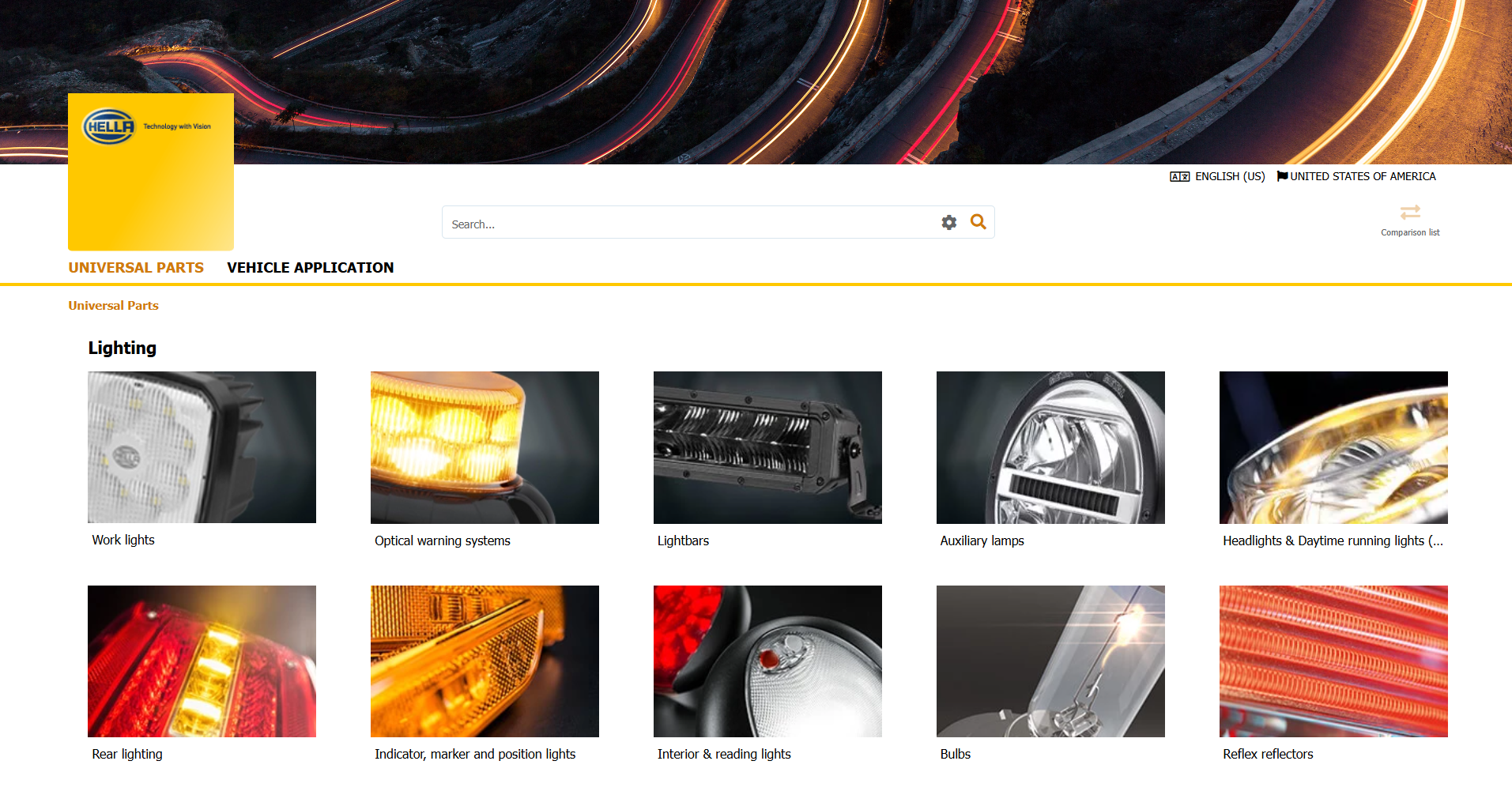High-beam assist
The high beam optimally lights up the road in the dark. However, this light function is only used rarely so as not to dazzle oncoming road users or vehicles in front. Camera-based high-beam assistants solve this problem. This page explains how the new lighting assistance systems work and the key aspects to bear in mind when testing and adjusting them. You will also find out what causes the blue edge in new headlamp systems.
Important safety note
The following technical information and practical tips have been compiled by HELLA in order to provide professional support to vehicle workshops in their day-to-day work. The information provided on this website is intended for suitably qualified personnel only.
- 1. Basic principles
- 2. Function
- 3. Workshop tips
Adaptive high-beam assist
Glare-free high beam assist with vertical cut-off line
The principle is simple: Driving with the high beam permanently on.
The conventional low beam represents a compromise. It is designed to minimise glare for other road users, but also provide drivers with the best possible illumination of the road. However, at high speeds and on uneven roads, the illumination provided by a conventional low beam is frequently less than ideal.
The so-called "glare-free high beam" follows the principle of a high beam that is permanently switched on without the driver having to worry about not being able to react quickly enough to oncoming traffic or dazzling oncoming drivers.
Vehicle detection via camera
A camera on the windshield inside the vehicle detects the lights of oncoming vehicles and vehicles in front up to a distance of 850 m (depending on the vehicle manufacturer). The camera is capable, in combination with evaluation electronics, of recording and evaluating many visual aspects of the traffic conditions and identifying dangers in order to react to changes in the conditions.
Using the camera data and intelligent headlamp control, the light distribution adjusts automatically to the traffic situation so that the high beam distribution remains available to the driver, thus significantly increasing the visual range compared to the normal low beam. Sources of danger are therefore identified in good time and accidents avoided.
Testing and adjusting the high-beam assistant
There are very different variants of maintenance work for high beams with integrated assistance systems. Depending on the manufacturer and model, classic high beam systems are adjusted together with the low beam, or separately in accordance with the manufacturer's instructions. New ultra-modern headlamp systems are adjusted in conjunction with the relevant control unit using diagnostic units.
Key points at a glance
Several important points must be observed when checking and adjusting the light distribution of modern headlamps. The adjustment can only be made correctly if the light distribution is interpreted correctly. It is therefore always extremely important for the person(s) performing the adjustment to have the necessary expertise. The specifications of the manufacturer for high beam assistance systems in particular must be observed. Compliance with the tolerances in relation to the standing surface of the vehicle and the beamsetter is also essential. Last but not least, the necessary equipment also plays a significant role as modern lighting systems can only be checked and adjusted correctly by using the diagnostic tester and a suitable beamsetter.
How helpful is this article for you?
Success
Success
Success
Success
Error
Please tell us what you did not like.
Thank you for your feedback!
Wrong Captcha
Something went wrong
Further technical information




